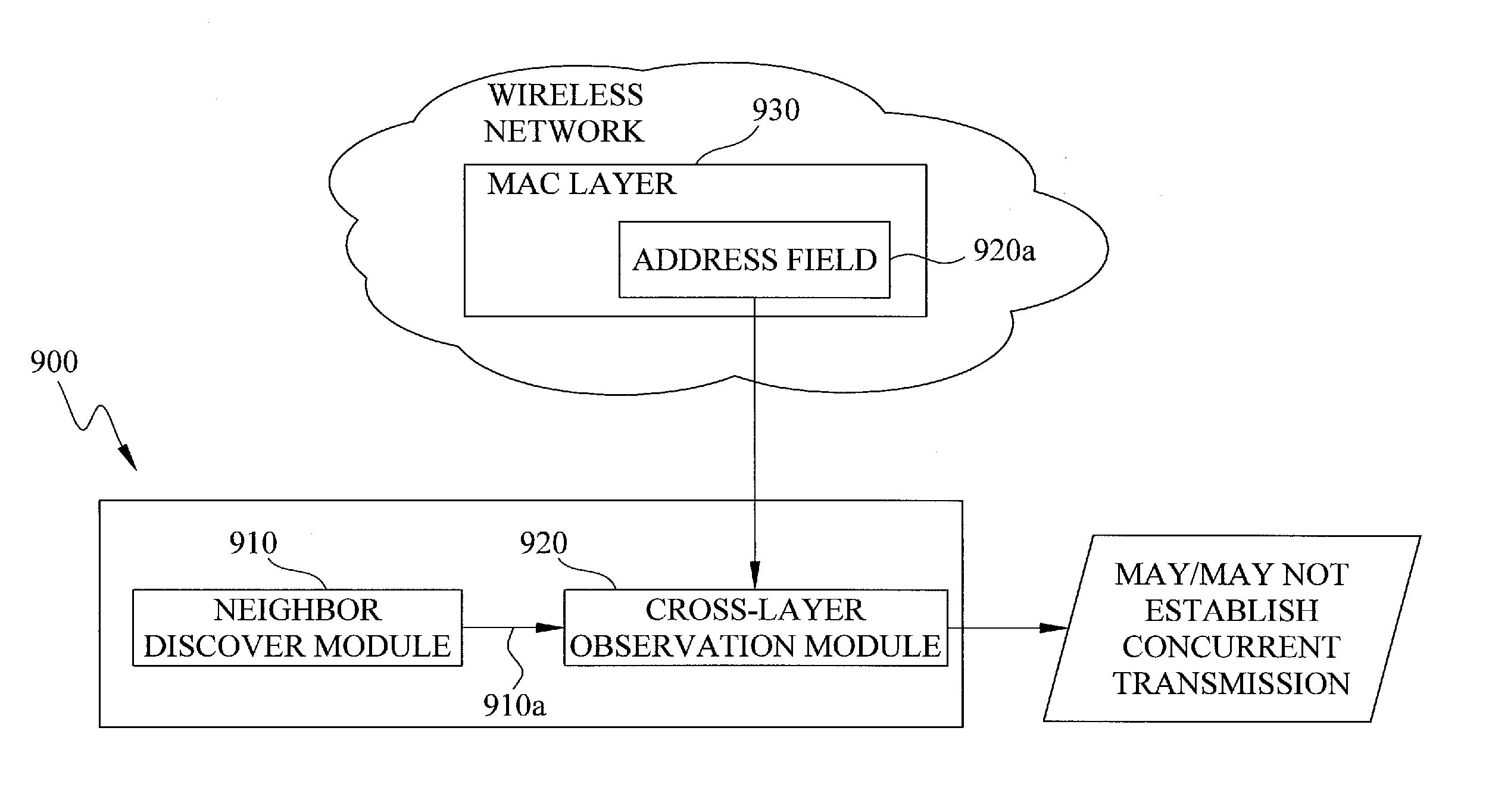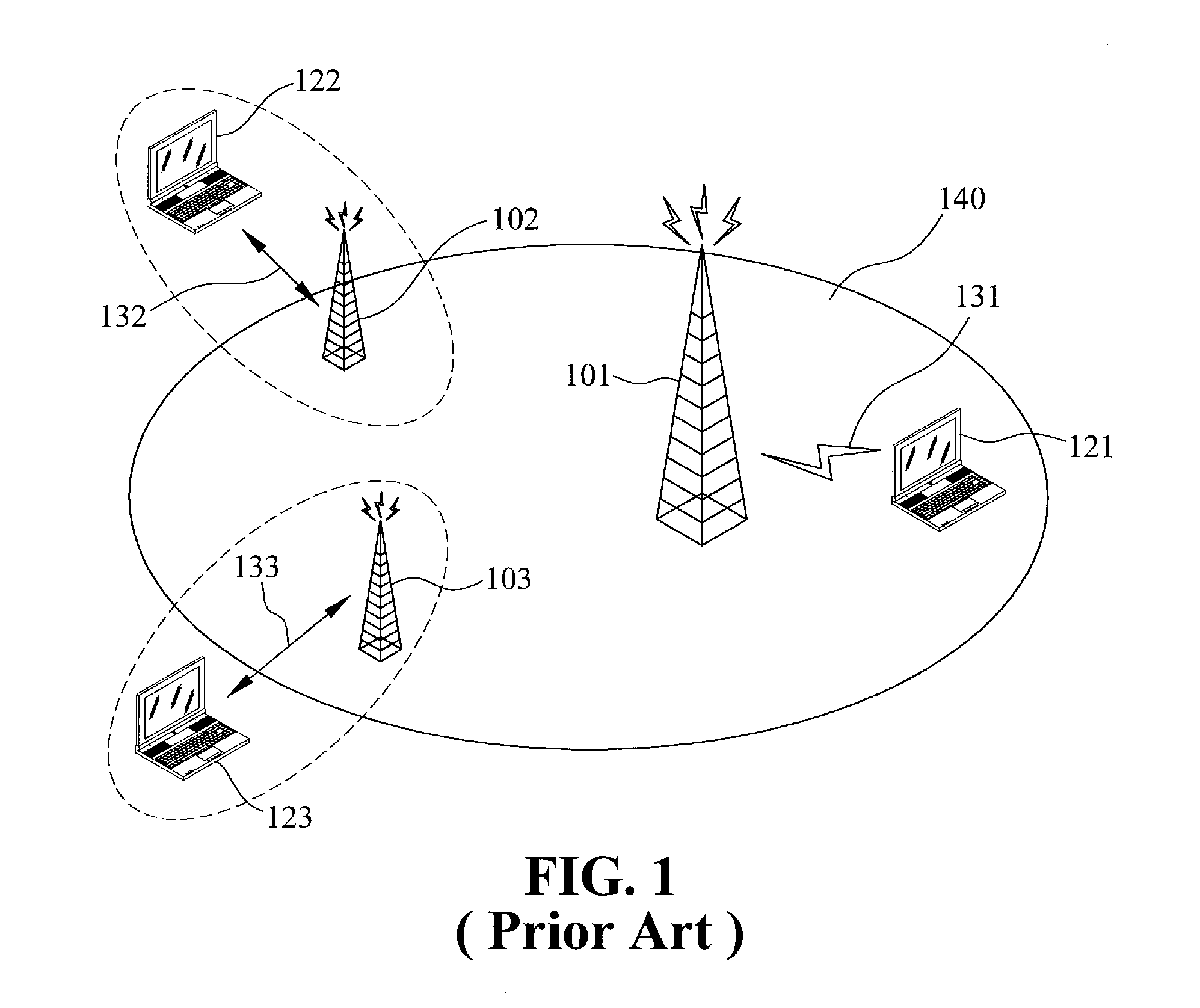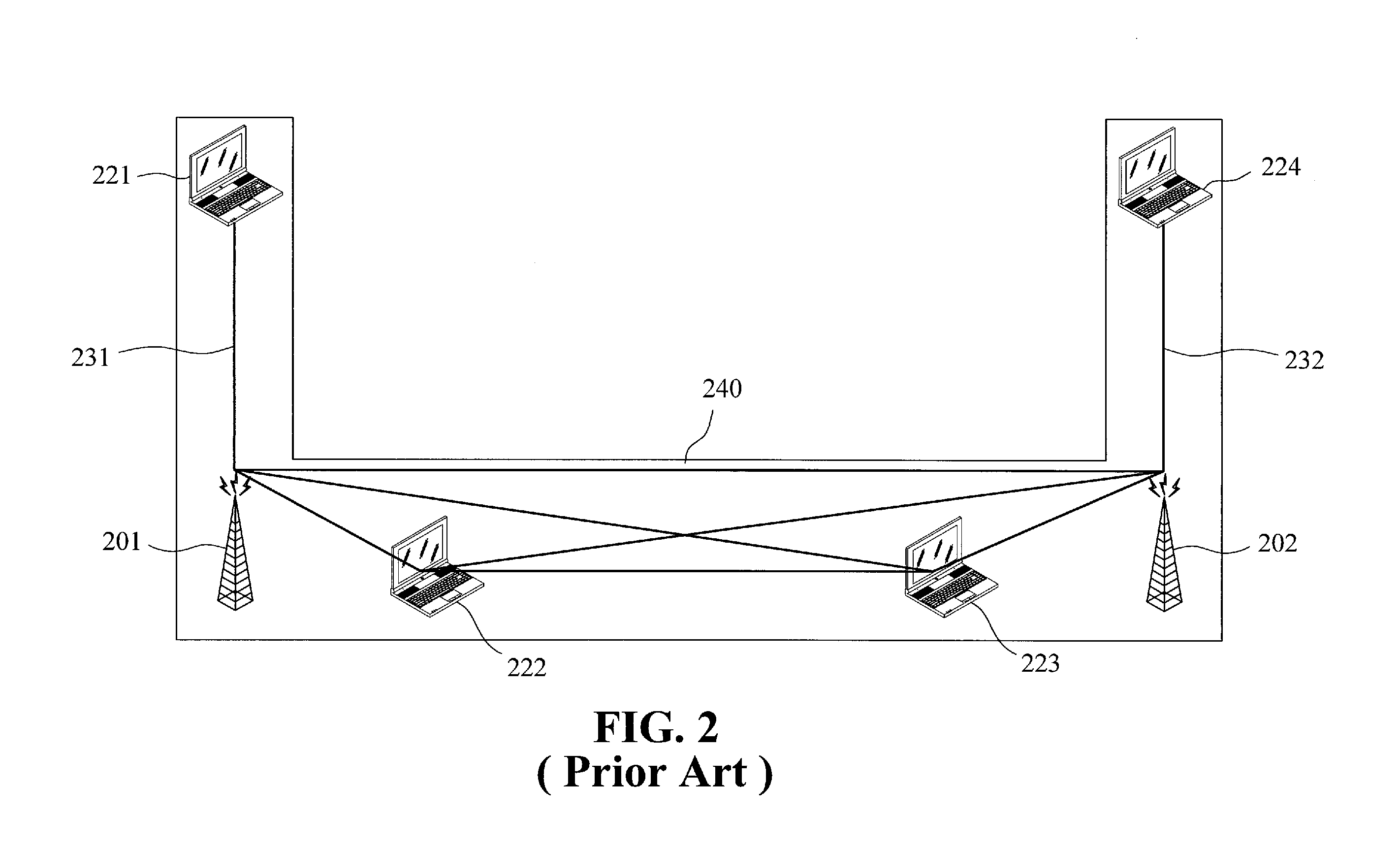Apparatus And Method For Neighbor-Aware Concurrent Transmission Media Access Control Protocol
a media access control and neighbor-aware technology, applied in electrical devices, wireless commuication services, network topologies, etc., can solve problems such as maca protocol still not completely solving the problem of exposed nodes, induced node problems, and network throughput degradation
- Summary
- Abstract
- Description
- Claims
- Application Information
AI Technical Summary
Problems solved by technology
Method used
Image
Examples
Embodiment Construction
The exemplary embodiments of the present invention provide a technique of neighbor-aware concurrent transmission (NACT) media access control (MAC) protocol to solve the hidden and exposed node problems with physical and virtual carrier sensing to achieve high spectrum throughput. The NACT MAC technique, in addition to identifying the concurrent transmission opportunity, may also solve the false blocking node propagation problem. Furthermore, the NACT MAC technique is also applicable to the general traffic and channel models.
NACT MAC technique is based on a neighbor discover procedure so that each node in a wireless network may obtain the topology information of all of its n-hop neighbors, where n is an integer greater than or equal to 2. The exemplary embodiments also disclose a cross-layer observation mechanism. The observation mechanism determines whether the concurrent transmission opportunity exists among a plurality of connections through physical and virtual carrier sensing an...
PUM
 Login to View More
Login to View More Abstract
Description
Claims
Application Information
 Login to View More
Login to View More - R&D
- Intellectual Property
- Life Sciences
- Materials
- Tech Scout
- Unparalleled Data Quality
- Higher Quality Content
- 60% Fewer Hallucinations
Browse by: Latest US Patents, China's latest patents, Technical Efficacy Thesaurus, Application Domain, Technology Topic, Popular Technical Reports.
© 2025 PatSnap. All rights reserved.Legal|Privacy policy|Modern Slavery Act Transparency Statement|Sitemap|About US| Contact US: help@patsnap.com



